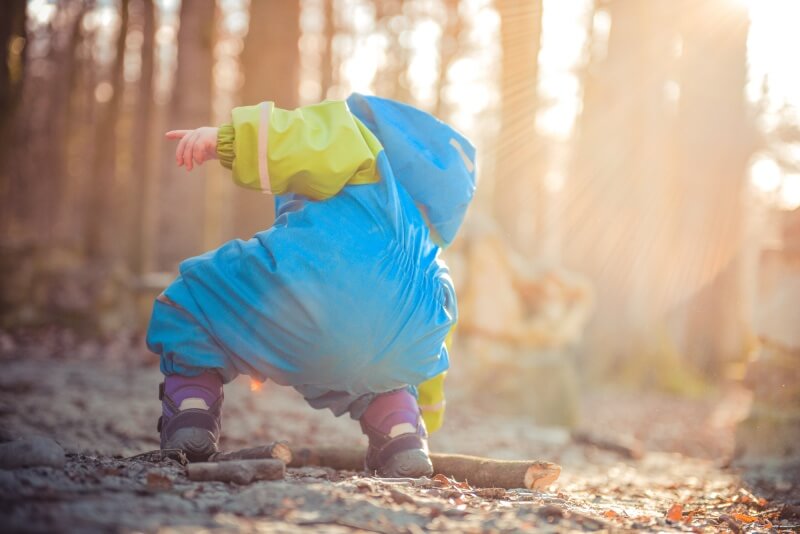By Forbes Cone, Director of Experiential Education
On hikes to the climbing crag with my two-year-old son, our progress is slowed by his distractions of leaves, branches, insects, and dirt. In my impatience to get to our destination, I usually encourage him speed up and leave the crawly things alone, with enticing descriptions what’s ahead. Yet, he stays stubbornly in the present moment and remains engaged by his surroundings.
As an impatient person (did I already mention that), it is a struggle to adapt to this new pace. As I have processed the new reality of spending time in the outdoors with a toddler, I have gone through various stages of grief
- DENIAL- I can still go on long extended hikes with my son; surely he can either walk five miles or patiently sit in the backpack until we arrive at our destination.
- ANGER- Realizing that my son can neither walk five miles nor sit patiently in a backpack, I usually take a fatalistic view of the future (and revisionist interpretation of the present), believing that if only I had more time to climb, I would be climbing the hardest routes on the Diamond Face on Longs Peak.
- ACCEPTANCE- Coming to terms with the fact that my son is slow, and that he is not really the reason I am an average climber, I decide to walk at his pace and even follow his lead.
- APPRECIATION- Upon investigation, it turns out that leaves, insects and dirt are not mundane; the ground is teeming with life, and seeing the world through my son’s eyes is absolutely fascinating.
As I have learned to accept and even appreciate slowing down, I have begun to question my previous assumptions about the outdoors.
So what is the point of heading outside? A commercial showing Alex Honnold conquer El Capitan suggests that the outdoors are meant to test our physical limits.
Is it hunt and gather?
No, we can now order food and clothes online to be delivered within 24 hours. Is there value in simply spending time outside? The answer is, “yes,” but do not take my word for it. According to a comprehensive study on the impact of wilderness on adolescents, Keller and Derr, of Yale University, interviewed 700 participants from leading wilderness experience providers.
Through a combination of interviews, surveys and observations, they looked at responses immediately before, just after, and six months after a wilderness trip. Between 66 and 75 percent of participants reported increases in self-esteem, autonomy, initiative, and interpersonal skills, and rather than diminishing over time, the impact appeared to deepen. Colorado Academy trips are being crafted with this research in mind. For example, on teacher Jesse Myers’ photography trips, he encourages students to slow down, shoot from unique angles, and consider the subtle impact of light on their subjects. During the Lower School bird-banding trip to Chatfield, students measure wing length, identify the bird’s gender, and catalog the species. Whether taking photos in the Sangre de Cristo Mountains or holding a bird in your hands, these activities are vehicles for deep investigation, powerful conversations, and expanded perspectives.
While the Outdoor Program offers a variety of trips throughout the year, do not wait for CA to take your child outside. Denver offers hundreds of micro-adventures at our doorstep in state parks, open space areas and national parks, all within a 90-minute drive. Whether visiting these places for the first time, or the hundredth, take on the mindset of a two-year-old: slow down, lean over for a closer look at the ground, and you will be surprised by what you find.
